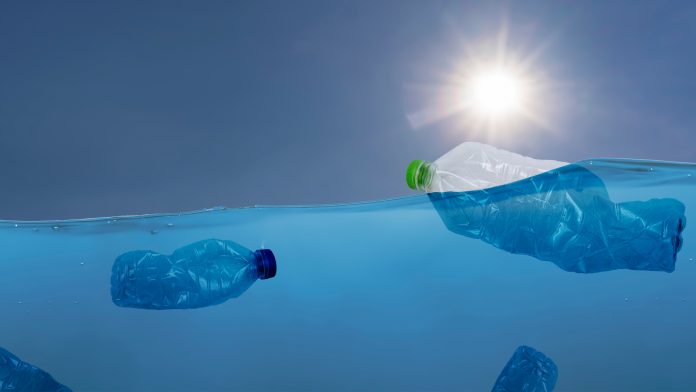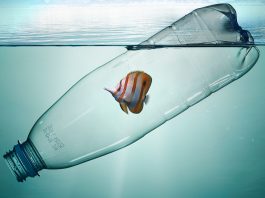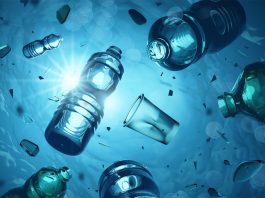A study finds that the number of microbial enzymes with the ability to degrade plastic is growing in correlation with local levels of plastic pollution.
The study
A team from Chalmers University of Technology measured different samples of DNA from hundreds of different locations from around the world. The researchers then used computer modelling to search for microbial enzymes that also had plastic-degrading potential. This was then cross-referenced with the official numbers for plastic waste pollution across countries and oceans.
Additionally, the scientists compiled a data set of 95 previously known enzymes that held plastic-degrading or modifying capability. Then, using ‘Hidden Markov Models’ they began to search through data taken from some of the largest global metagenomic studies in order to identify homologous sequences from 236 locations. The researchers used samples of the internal human microbiome as a control for false positives, because no plastic-degrading enzymes have been identified within humans.
They discovered a total of around 30,000 enzyme hits, circa 12,000 in the ocean microbiome and 18,000 in the soil, corresponding to 10 major commercial plastics, including six polymers and four additives. Nearly 60% of the identified plastic-degrading enzymes did not map to any known enzyme classes, suggesting that the researchers uncovered novel plastic-degrading functional content.
The results
The researchers concluded that the quantity and diversity of plastic degrading enzymes is increasing, in direct response to local levels of plastic pollution. In total, over 30,000 enzyme homologues were found, all of which possessed the potential to degrade up to ten different types of commonly used plastics. Homologues are members of protein sequences sharing similar properties. The locations that contained the highest amounts were notoriously the most polluted areas, such as the samples taken from the Mediterranean Sea and the South Pacific Ocean.
“Currently, very little is known about these plastic-degrading enzymes, and we did not expect to find such a large number of them across so many different microbes and environmental habitats,” explained Jan Zrimec, primary author of the study, and researcher at the National Institute of Biology in Slovenia.
A connection between land and sea
The plastic degrading enzymes that the researchers found were widely distributed across both ocean and soil microbiomes. A microbiome is the entire set of microbes present in a specific environmental location or group of locations. Upon examination of the land and ocean samples, a variation was revealed in the number and type of plastic particles and the plastic degrading enzymes.
Compared to the ocean samples, the land samples contained many more phthalate-based plastic additive compounds. These are commonly used in a variety of processes and are known for their susceptibility to leak during production, disposal and recycling, which are practices that commonly take place on land. Researchers considered this information and discovered more enzymes which were able to degrade these plastics that were found in the land samples, indicating a correlation between land and sea.
The ocean samples were taken from 67 different locations, eight different oceans and at three different depths. The results revealed a consistency in the quantity of enzymes with degrading capability increasing with depth, which also indicates a connection to the greater level of microplastics that have been repeatedly observed at deeper levels in the ocean.
How these enzymes can help the environment
The issues regarding plastic pollution are too widespread due to the expansion of plastic production increasing in the last 70 years, rising from 2 million tonnes to 380 million tonnes. This provided an evolutionary time period for various microbes present in the environment to respond to these compounds. Many different enzymes have been discovered in response to this, all of which possessed the ability to degrade different plastics.
“Using our models, we found multiple lines of evidence supporting the fact that the global microbiome’s plastic-degrading potential correlates strongly with measurements of environmental plastic pollution – a significant demonstration of how the environment is responding to the pressures we are placing on it,” said Aleksej Zelezniak, an associate Professor in Systems Biology at Chalmers University of Technology.
The oceans in particular experience roughly 8 million tonnes of plastic pollution every year. This is a concern as the natural progression for plastic degradation is very slow, with some taking up to hundreds of years. Therefore, the growth and accumulation of plastic waste both in the oceans and on land is a global problem and presents an increasing need for solutions to manage this waste. Zrimec and their team believe that their results could potentially be used to discover and adapt enzymes for novel recycling processes.
“The next step would be to test the most promising enzyme candidates in the lab to closely investigate their properties and the rate of plastic degradation they can achieve. From there you could engineer microbial communities with targeted degrading functions for specific polymer types,” concluded Zelezniak.





